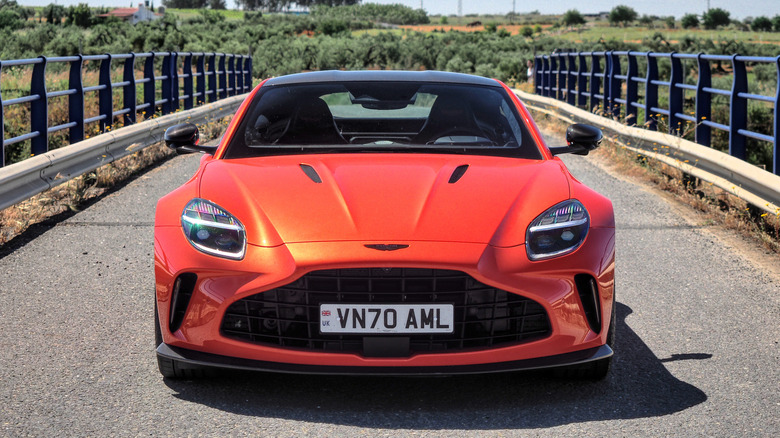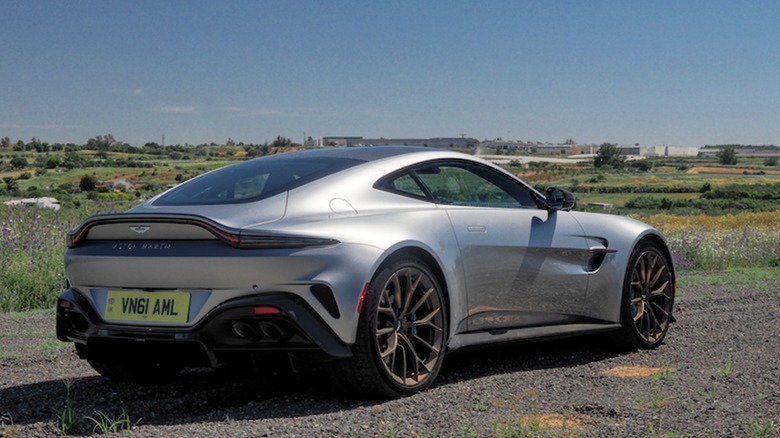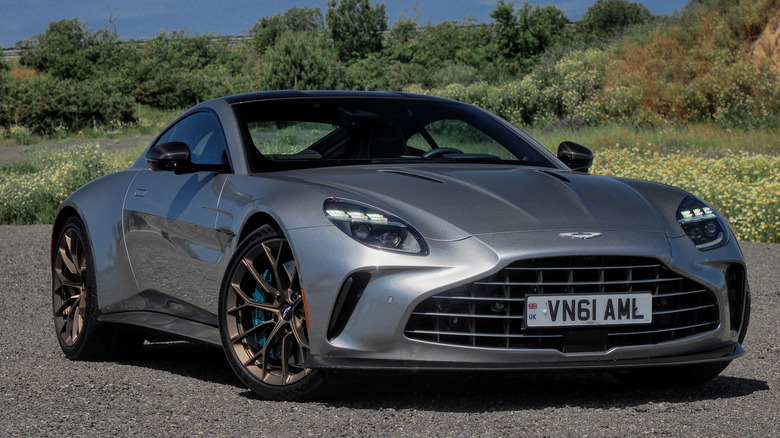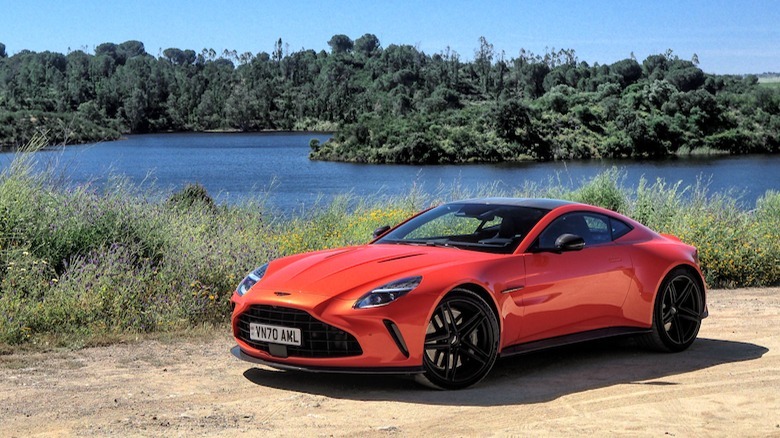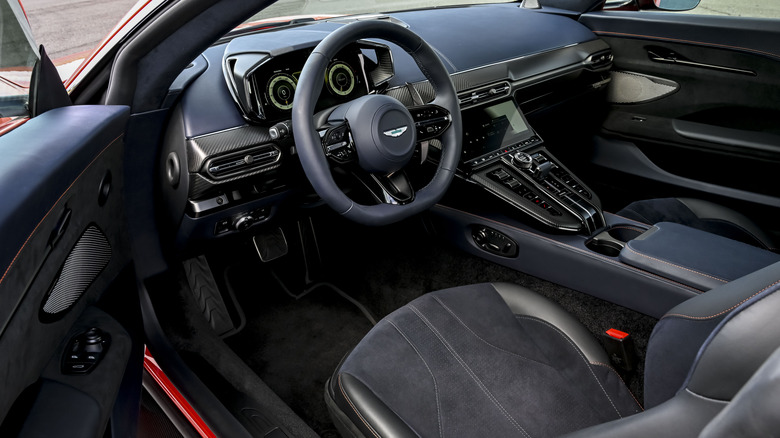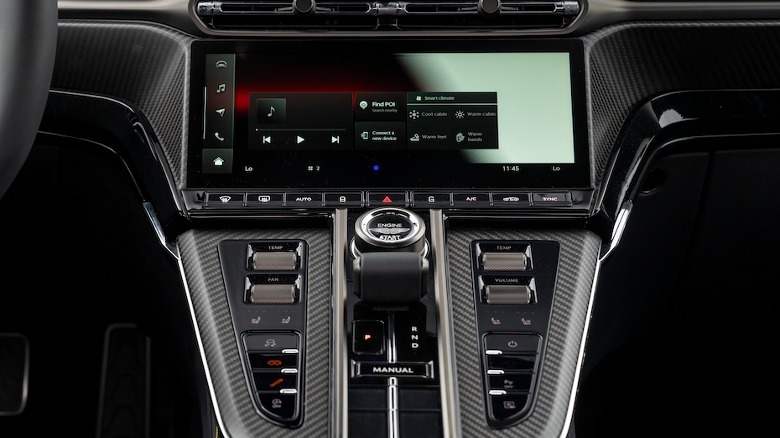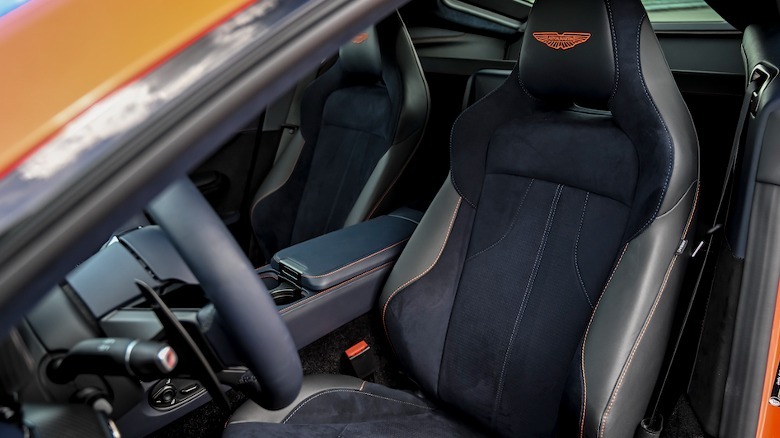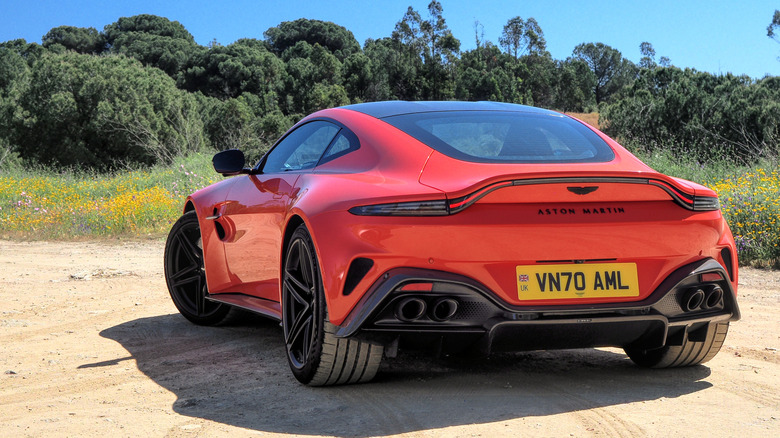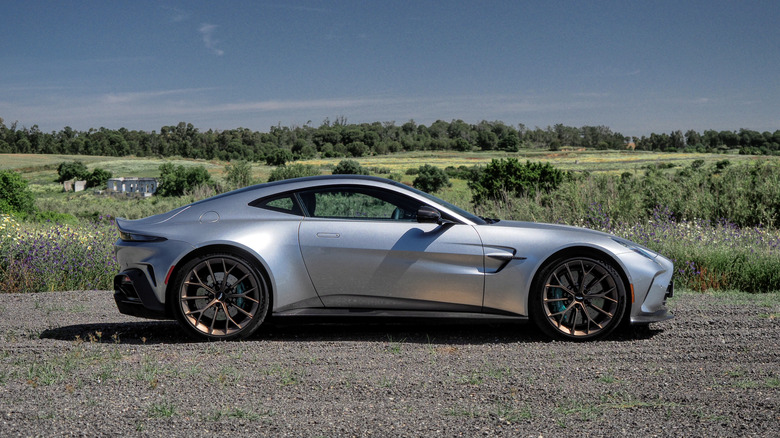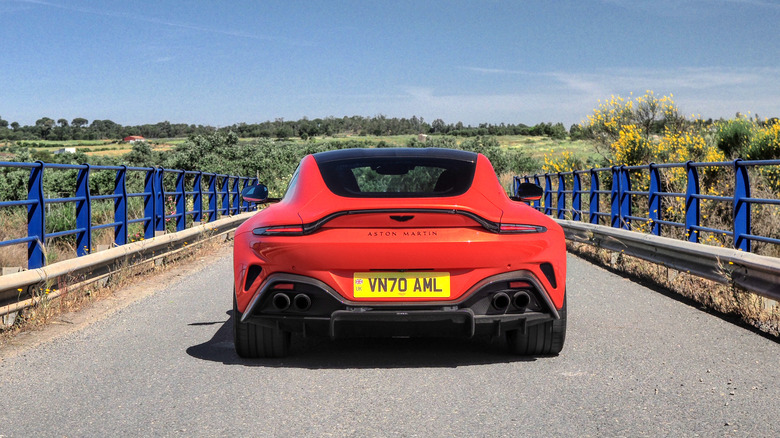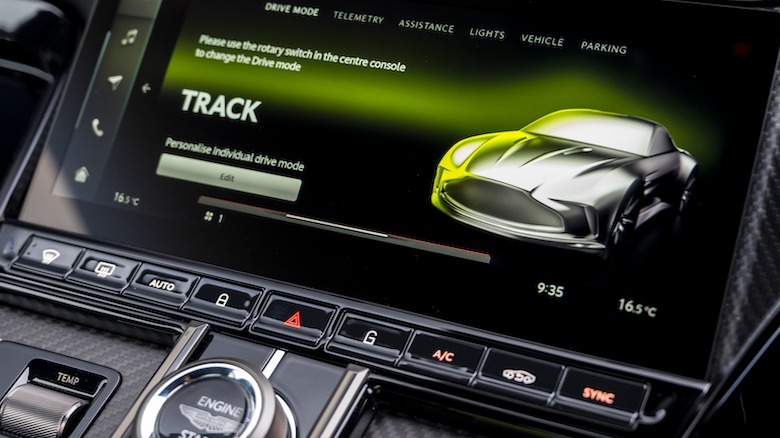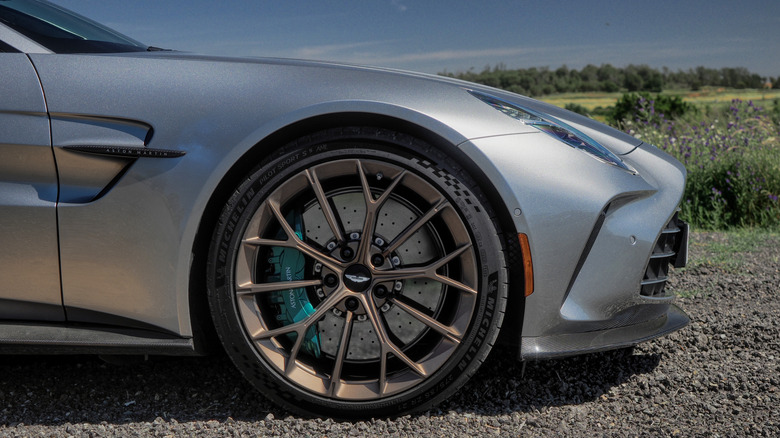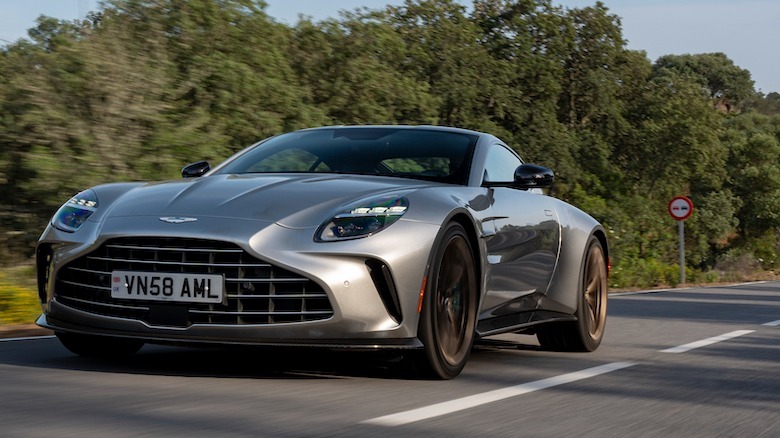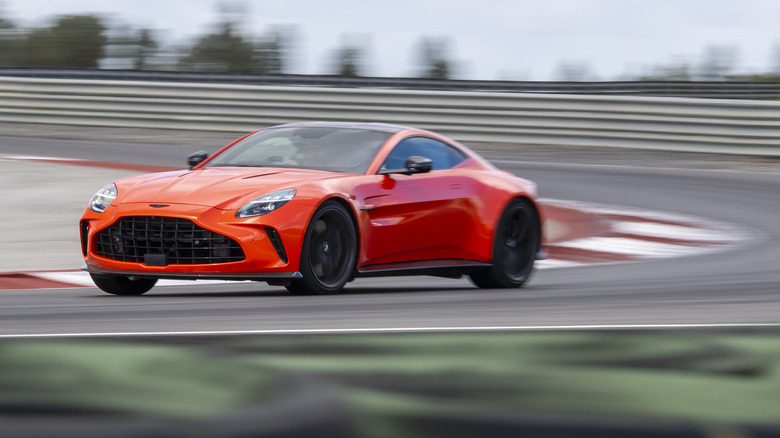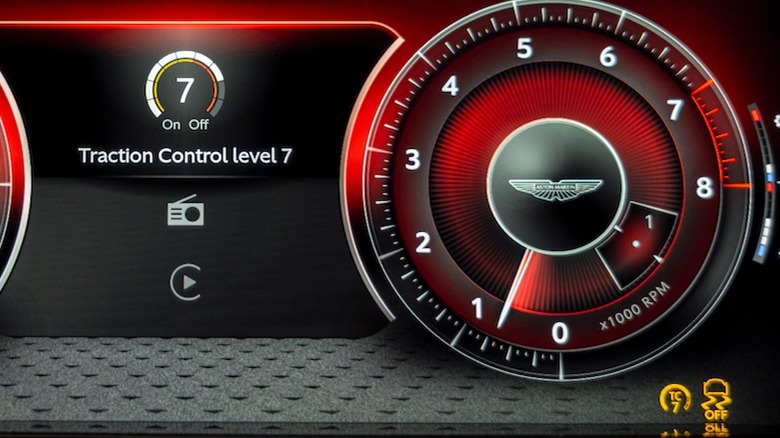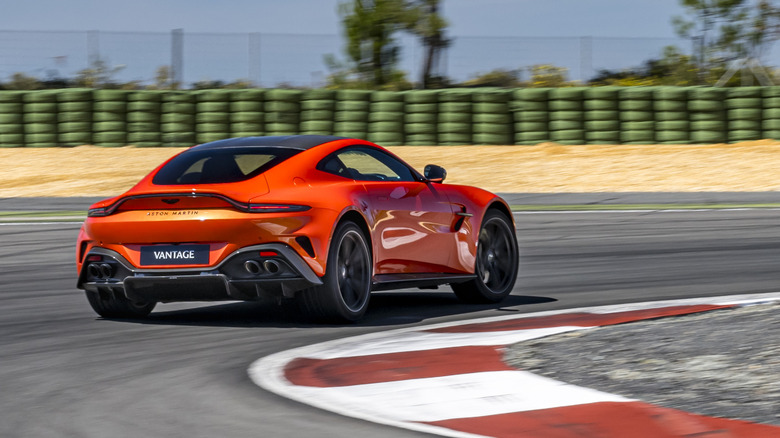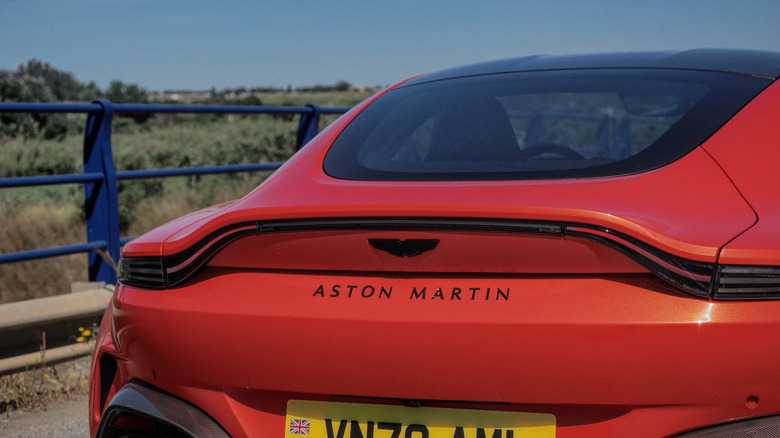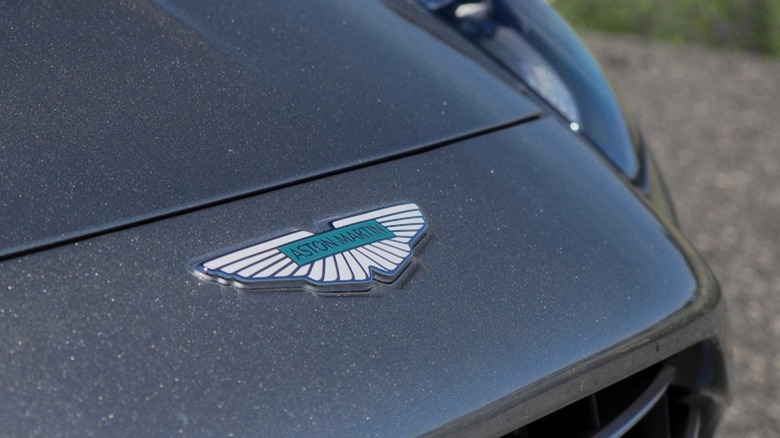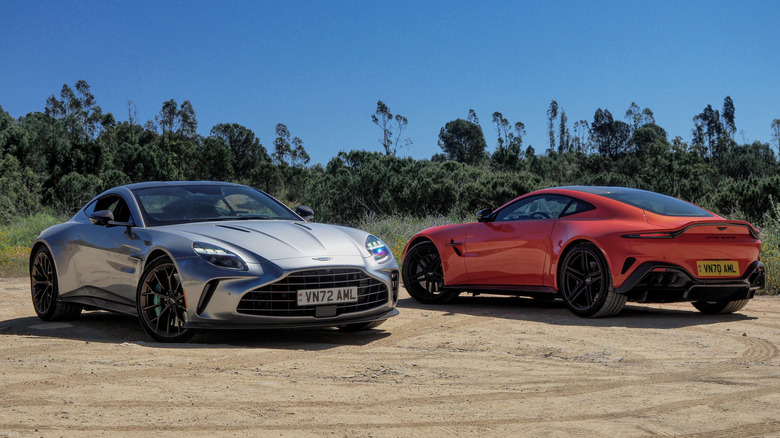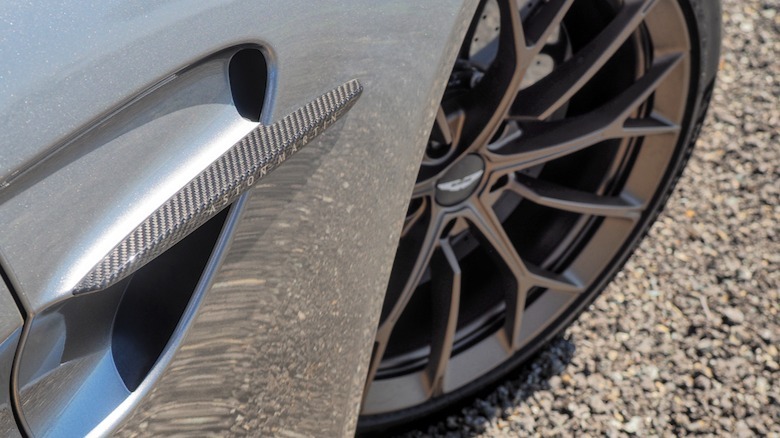2025 Aston Martin Vantage First Drive: Brutal Looks Can't Hide The Truth
When you've upwards of $191,000 to spend on a new car like the 2025 Aston Martin Vantage, justification looks somewhat different to the decisions being made in the average Toyota or Kia dealership. The new Vantage picks up the torch as the British automaker's most driver-focused car but skips the usual route to demonstrating that — even if, for most buyers, the most convincing evidence of success may go unexplored.
While "better than the old car" is the obvious metric by which any new model is judged, the 2025 Vantage finds itself with a far more intimidating benchmark than mere incremental improvement. Aston Martin's self-imposed goal of gliding up, out of the sports car segment and into the ultra-luxury performance set leaves it squeezed by Rolls-Royce and Bentley on one side, and McLaren and Ferrari on the other.
Outright speed, then, or some nice leather is no longer sufficient. Put simply, the wealthy clientele a reinvented Aston Martin hopes to court expect not just a fancy toy, but an experience. In the case of the new Vantage, that experience means power with the confidence to actually use it.
If looks could kill
Even before Vantage graduated into its own model line, cars bearing the badge have leaned brutish. This 2025 model looks good in colors both wild and reserved, though darker shades can hide some of the surfacing. From the back, in dark blue, you could almost think you were following a 911.
Where the DB12 is long and sleek, effortlessly graceful as befits a grand tourer (or, in Aston Martin speak, a "super tourer"), the Vantage eschews any possible excess. It's the sports car equivalent of a club bouncer in a straining dress shirt: covered up, certainly, but with no question as to the potential mayhem underneath.
Because of that shrink-wrapped design, like a Saville Row tailor discovered Lycra for the first time, the Vantage looks smaller in person than it does in photos. Its proportions — the wide front, pinched midsection, and meatily broad rear fenders — are exaggerated and boisterous. The price of options could be described similarly. This Cosmos Orange example added on $13,600 for the paint, $1,500 for the satin black wheels, $11,700 for the exterior carbon fiber, $1,800 for special badging, and $1,400 for smoked taillights, among other things.
A cabin to take on luxe behemoths
Inside, the vast improvement in ergonomics and tech that we first saw in the DB12 has been carried over. The dashboard blends physical controls for the driver-friendly essentials — tweaking suspension, traction control, exhaust, and other settings, along with climate control and multimedia — with a 10.25-inch touchscreen running Aston Martin's new infotainment software. It's fast and cleanly laid out, as is the matching 10.25-inch driver display. It also supports wireless Android Auto and Apple CarPlay.
This hasn't just been a surface makeover, either, with a new architecture that supports, among other things, over-the-air (OTA) updates for future features and improvements. A Bowers & Wilkins audio system has been specially tuned for the Vantage's cabin, meanwhile, and that's not the only adjustment. You sit 10mm lower than in the DB12, and so Aston Martin reworked the positioning of every control and interface to make sure they're within comfortable reach.
Combine that with the lavish application of leather and metal — and the automaker's expansive Q Division customization options, which can leave the Vantage's cabin anything from classically sober through to eye-searing — and you have an interior that feels more than up to the self-imposed goal of challenging Rolls-Royce and Bentley. It's priced that way, too: the Cosmos Orange Vantage here stacked $10,000 for the audio system, $11,700 for the interior trim, and $3,100 for the fancy brightwork onto the price tag, taking the total including exterior options to a heady $261,900.
More power, more usable power
Under the hood is a 4.0-liter twin-turbo V8, now with 656 horsepower (around 30% more than the old Vantage V8) and 590 lb-ft of torque (up 15%). 0-60 mph arrives in 3.4 seconds, and the new Vantage will go rocketing on to a top speed of 202 mph.
Aston Martin isn't exactly ashamed of its partnership with Mercedes on engines, though it prefers to highlight the changes made to make it fit for the Vantage. That includes new heads, bigger turbos, along with revised compression ratios and cam profiles. There's a new, 8-speed ZF transmission uprated for the extra torque, along with a new electronic differential and a new quad-exit performance exhaust.
The upshot is more power and torque across the rev range from 2,000 rpm up; a 40% improvement in torque response in terms of throttle position; and a 10-degree cooling advantage over the outgoing car. The new Vantage revs out higher, and its new Bilstein DTX adaptive dampers have a roughly fivefold increase in overall tuning range compared to the old car.
Confidence is key
That is, quite frankly, a lot of numbers, percentages, and promises. Indeed you could easily believe that wowing with on-paper specs is the primary goal for the sports car segment these days, an endless game of marginal improvements over the competition that, though small in themselves, permit shouty marketing and performance boasts.
Aston Martin would, though, like us all to step off that treadmill. The Vantage, global head of marketing and communications Renato Bisignani argues, offers "an abundance of character and engagement, in an era where superficial statistics are no longer the measurement of a car's ability to thrill."
The cynic might point out that the British automaker has a vested interest in shifting the goalposts: after all, the Vantage is seven-tenths of a second slower 0-60 than a similarly-priced Porsche 911 Turbo (from $197,200), despite being up on power. Said cynic could also, however, concede that Bisignani's goal of instilling driver confidence — "the ability to bring it to the limit, stay at the limit, play with the limit" — is of equal if not greater importance. A car, the capabilities of which you're too intimidated to explore, is little more than a bragging bauble.
The first surprise is practicality
For all the new Vantage might want to leave you thinking it's a churlish beast, then, it's actually oddly practical. Sure, there's only seating for two inside, but visibility through both the front and rear glass is unexpectedly good. The new frameless side mirrors not only keep the coupe's overall width the same as before, despite the body being 30mm broader but offer a genuinely expansive amount of reflective surface. Given the amount of carbon fiber and the likely cost of repairing those standard 21-inch wheels, every little bit helps.
With Sport mode the new default — Aston Martin leaving GT mode and its aspirations of comfort to the DB12 — you can't accuse the new Vantage of misleading with its intentions on the asphalt. The ride is firm, even in the softest possible setting; by the time you notch the dedicated drive mode dial through Sport+ to Track, anything but the glassiest of roads can prove insufferable. If you want the throttle, V8, transmission, and exhaust mapping of the most potent setting, without the achingly-stiff suspension, there's a driver-customizable Individual mode, in addition to the Wet setting for slippery surfaces.
Near-violent on the road
Out on the winding, sweeping roads of Seville, where Aston Martin invited SlashGear to try out its newest coupe, Sport+ struck a welcome balance between pace and refinement. Potholes are still to be avoided, naturally, but the Vantage sashays between turns with grace, neither demanding an excess of muscle to nail each line nor isolating you from what's going on beneath the custom Pilot Sport S 5 rubber.
The test fleet all came equipped with the optional carbon ceramic brakes ($14,400), steel being the standard — either way with 6-piston calipers and 410/400 mm discs up front, and 4-piston calibers with 360 mm discs at the rear — that proved both easy to modulate but also prodigious in their slowing power. In urban stop-start traffic, meanwhile, only the very occasional carbon squeak chewed mouselike into the overall refinement.
Acceleration, as you'd expect, is fiendish. The combination of more power and torque, with a remapped throttle and shorter final drive ratios for the transmission, leaves the Vantage near-violent in its pickup. Sport+ mode leaves behind Sport's ever-so-slight reticence to downshift the split-second you hit the gas, not to mention rousing a far more enjoyable mechanical wail from the tailpipes.
A true track toy
Certainly, there's far more power and grip here than can be (safely, legally) expressed on public roads. What a lucky coincidence it was then, that Aston Martin had a race track on hand to test the Vantage's trick adjustable traction control system. Launched first on the DB12, it skips a blunt, binary approach to turning the ESP off, in favor of nine levels which progressively allow up to 400% wheel slip (and thus more drama).
Long-press the Traction Control button and you get Track ESP mode, with Aston Martin's pick of the settings to flatter performance driving. Hold it down again, and you get a little number on the driver's display (here's hoping the first OTA update makes its font size bigger), and you can twiddle through the multiple levels with the drive mode dial.
It's here that the Vantage's most shocking secret lays itself bare: for all the angry style and the yelling drivetrain, it's more playful than punishing. A 650+ horsepower rear-wheel drive coupe on an unfamiliar track might not seem the best time to start experimenting with dialing back the safety tech, and yet Aston Martin's system is so progressive, and the car so confidence-inspiring, that the whole thing becomes addictive.
Immediate feedback to make you a better driver
The immediacy is what stands out. Track ESP is around 4-5 on the ESP Off numerical scale, senior vehicle engineering manager James Owen explained to me, and so I began cranking from there with each lap. Aston's course was well-kinked with hairpins, and the game became trying to balance speed and line with heavy braking, and allowing the Vantage's inclination to swing its rear. While testing out that prodigious acceleration on the kilometer-long straight was tempting every time, it was also the perfect opportunity to set the car up for the next round of experimentation.
You can feel it happening, the changes as you notch the dial, and the resulting impact on lap time and line. Level 8, for instance, proved more fun but less efficient; pulling back to level 7 helped me be sharper in the corners. I've done my fair share of track days, in a wide range of vehicles, but none have encouraged such experimentation — a blend of science and silliness — in the way the Vantage does.
Too good for the road alone
Fresh off the track, my biggest disappointment — beyond that having been my final lap of the day — was the realization that most new Vantage owners probably aren't going to come anywhere close to exploring the potential or the possibilities of their car. Aston Martin doesn't have specific numbers as to how many of its customers go to the track, but I'd wager it's a tiny percentage. The safe limits of public roads cut in well before tinkering with the traction control levels pays dividends.
That's something the automaker is aware of, I'm told, and it's looking at how it could give owners more opportunities to explore the upper echelons of their vehicles' capabilities. In the process, it could also help broaden Aston's awareness in the same way that getting back into Formula 1 (something marked at the time with a special Vantage F1 Edition, no less) was intended.
The weird reality is that, while most people know "James Bond's car," Aston Martin's current models haven't quite sunk into the American car buyers' consciousness the way, say, a 911 Turbo or an AMG SL 63 has. Global production is up in 2024, though that still means around 7,000 cars total and half of those will be DBX SUVs. If you prize rarity, then, Aston Martin's challenge is your potential gain.
2025 Aston Martin Vantage Verdict
For an all-rounder (that isn't an SUV), it's tough to argue with the DB12. Glamorously pretty, and in possession of both vast luxury and vast performance, Aston's flagship rightly earned respect. Unlike the Vantage, it's offered as both a hard or soft top, though either way you pay handsomely: the coupe starts at around $250k, the DB12 Volante convertible further north of that.
The $191,000 starting price of a 2025 Aston Martin Vantage, though far from cheap, feels close to a bargain in comparison. While far from the first pick for a one-car garage, that seems an unlikely concern for the typical Vantage owner. The competition is fierce; the 911 Turbo trades personality for undeniable Teutonic excellence, while the SL 63 feels — forgive me — a little too mainstream to feel so special. The entry models from Aston's declared rivals, Ferrari and McLaren, start out $40-50k higher, though that's before you flirt with any of the options sheets. After that, all bets are off.
Claiming a decision like this comes down to rational thought or budget, though, is missing the point. Vantage buyers will buy based on vibes, and you can't really say that's any better or worse a metric than a spreadsheet of 0-60 times. All I ask is that owners of Aston Martin's new driver-flattering plaything prove me wrong, and also book a track day or three.
